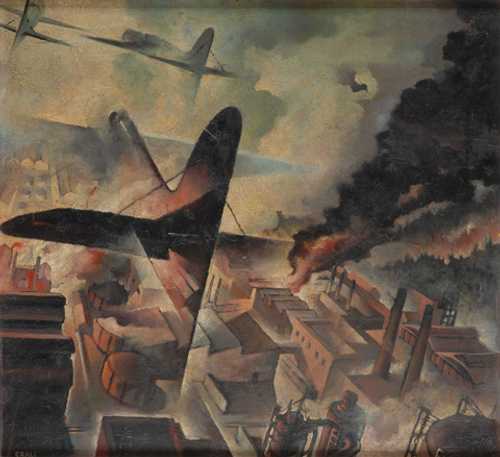
Aeropittura
Tullio Crali, “Bombardamento di una fabbrica” (Factory’s bombardment), oil painting, 1942. Born at Igalo, Dalmatia, 1910, Italian artist associated with Futurism, in painting influenced by Giacomo Balla and Enrico Prampolini, Tullio Crali was an exponent of the Aeropittura’s phenomenon. The Aeropittura (Aeropainting), a major expression of the second generation of Italian Futurism, from 1929 through the early 1940s. Aeropittura was launched on 1929 in the manifesto “Perspectives of Flight”, signed by artists like Benedetta, Depero, Dottori, Fillia, Marinetti, Prampolini, Somenzi and Tato which stated that "The changing perspectives of flight constitute an absolutely new reality that has nothing in common with the reality traditionally constituted by a terrestrial perspective" and that "Painting from this new reality requires a profound contempt for detail and a need to synthesise and transfigure everything.” On 1928 Tullio Crali flew for the first time and his enthusiasm for flying and his experience as a pilot influenced his art and Crali played a significant part in Aeropittura. His earliest aeropitture represent military planes, Aerial Squadron and Aerial Duel (both 1929). In the 1930s, his paintings became realistic, intending to communicate the experience of flight to the viewer. After the war Crali lived in Turin where he continued to promote Futurist events. Despite the ending of the Futurist movement with the death of Marinetti in 1944 and its Fascist reputation, Crali remained attached to its ideals and aesthetic. Crali is dead at Milan on 5 August 2000. Victor Sierra
This is a companion discussion topic for the original entry at https://www.ww2incolor.com/gallery/art/43577/aeropittura
